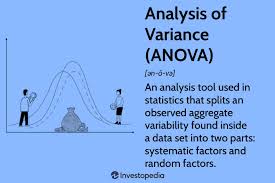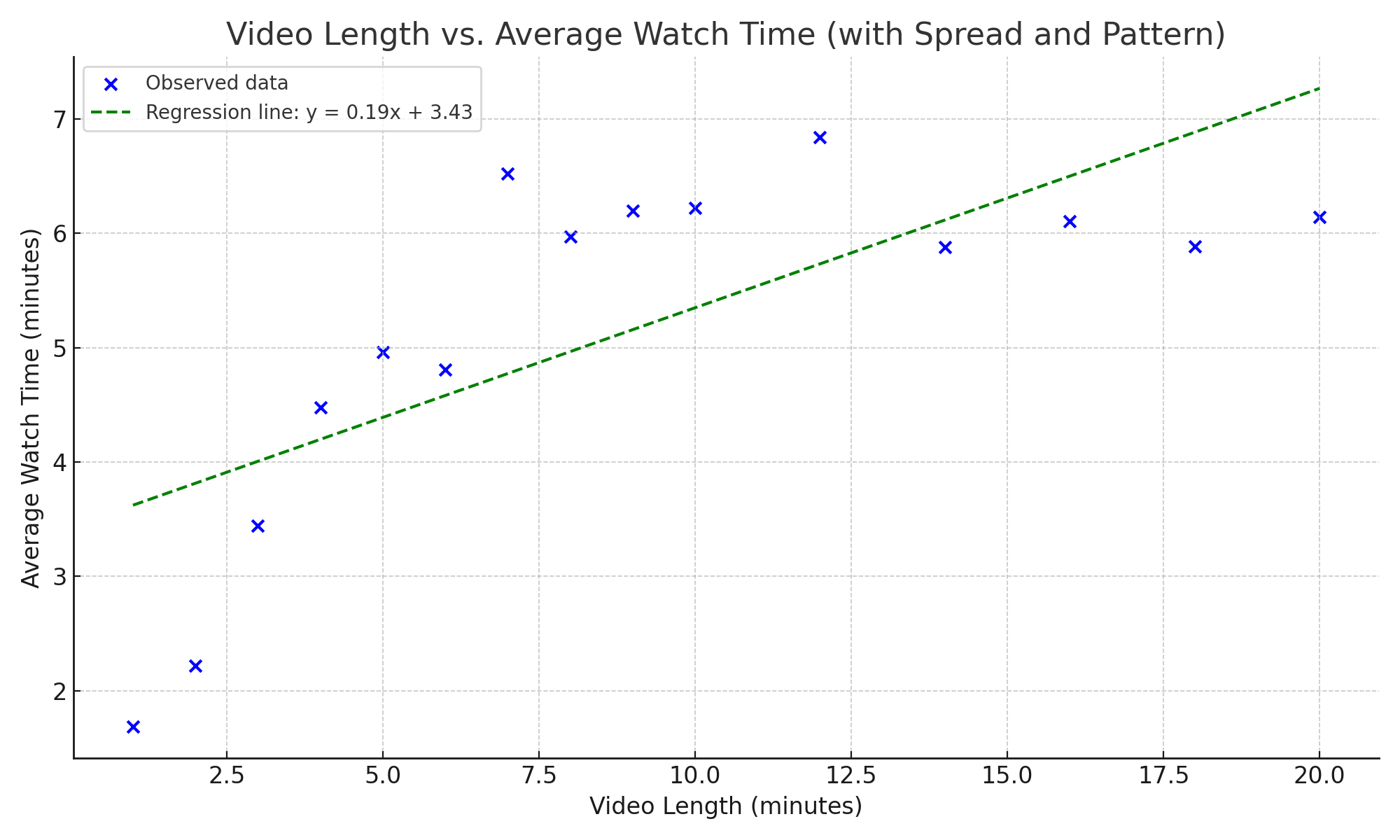Tag: Quantitative
-

Collaborative Streaming Infrastructures in Europe
Europe’s streaming market remains fragmented due to linguistic, cultural, and regulatory divisions, preventing the rise of a unified platform like Netflix. This research explores how collaborative infrastructures—such as the Bedrock platform—enable national broadcasters to share technology while maintaining editorial independence. Through co-opetition, these ventures aim to achieve scale, reduce costs, and enhance user experience, offering…
-

What does ANOVA in Social Media Marketing?
This educational webpage introduces media students to the fundamentals of ANOVA and the t-test, two essential statistical tools for analyzing data in social media marketing. It explains how ANOVA helps compare the effectiveness of different platforms, content types, or influencer strategies
-

Metrics (Don’t) Matter! Media Measurement; Digital Age
In today’s fragmented media landscape, traditional metrics like viewership and subscriber counts are no longer enough. Drawing from the podcast “The Metrics Don’t Matter” with Evan Shapiro and Marion Ranchet, this essay explores how media professionals must move beyond vanity metrics to embrace tools and measurements that reflect real audience engagement. From attention metrics to…
-

What has Linear Regression ever done for you?
Understanding Linear Regression in Media Studies This webpage offers a clear and practical introduction to linear regression tailored for students in media studies. It explains core concepts like the regression equation, slope, and intercept, and connects them directly to real-world media scenarios—such as predicting viewer engagement based on video length. The resource includes: Step-by-step guidance…
-

Optimizing User Experience in the Era of Streaming
Research Proposal: Optimizing User Experience in the Era of Streaming Overload—Exploring Interface Design, AI Integration, and Cross-Platform Solutions for Content Discoverability
-

Disruption of the TV industry
The analysis of television viewing trends highlights the profound impact of streaming services on traditional TV consumption. According to Ofcom’s data, the main Public Service Broadcasting (PSB) channels in the UK have experienced a significant decline in their market share, from 100% in 1988 to approximately 51% in 2017. A parallel trend is evident in…
-
What is conjoint analysis?
Sawtooth Software, 2021 Introduction to conjoint analysis Conjoint analysis is the premier approach for optimizing product features and pricing. It mimics the trade-offs people make in the real world when making choices. In conjoint analysis surveys you offer your respondents multiple alternatives with differing features and ask which they would choose. With the resulting data,…
-
How to Measure Loss Aversion
To measure loss aversion among consumers in marketing, you can use the following approaches: 1. **Behavioral Experiments**: Design experiments where participants choose between options framed as potential losses or gains. For example, test whether consumers are more likely to act when told they could “lose $10” versus “gain $10” for the same decision[2][6]. 2. **A/B…
-

Loss Aversion in Marketing:
Loss aversion, a cornerstone of behavioral economics, profoundly impacts consumer decision-making in marketing. It describes the tendency for individuals to feel the pain of a loss more strongly than the pleasure of an equivalent gain (Peng, 2025), (Frank, NaN), (Mrkva, 2019). This psychological principle, far from being a niche concept, permeates various aspects of consumer…
-

Research Ideas: Loss Aversion and Marketing
Ten research suggestions building upon the existing literature on loss aversion’s impact on marketing and commercial strategies. The preceding analysis highlighted the significant influence of loss aversion on consumer behavior, shaping decisions across various marketing aspects, from advertising and pricing to product design and customer loyalty. These suggestions aim to address gaps in current understanding…
-

Loss Aversion in Marketing and Commercials: A Multifaceted Analysis
Loss aversion, the psychological principle that the pain of a loss is felt more strongly than the pleasure of an equivalent gain (Guttman, 2021), (Schulreich, 2020), profoundly impacts consumer decision-making. This disproportionate weighting of losses over gains significantly shapes how consumers perceive value, make choices, and respond to marketing messages
-

YouTube Strategy for Traditional Media: Channel 4’s Approach
Channel 4’s approach to YouTube demonstrates that traditional broadcasters can successfully adapt to the changing media landscape. By embracing data-driven decision-making, tailoring content to platform-specific audiences, and maintaining a flexible strategy, broadcasters can turn potential threats into opportunities for growth and audience engagement.As the lines between traditional and digital media continue to blur, the experiences…
-
Confidence Interval
As a teacher, I often find that confidence intervals can be a tricky concept for students to grasp. However, they’re an essential tool in statistics that helps us make sense of data and draw meaningful conclusions. In this blog post, I’ll break down the concept of confidence intervals and explain why they’re so important in…
-
Regression
Statistical regression is a powerful analytical tool widely used in the media industry to understand relationships between variables and make predictions. This essay will explore the concept of regression analysis and its applications in media, providing relevant examples from the industry. Understanding Regression Analysis Regression analysis is a statistical method used to estimate relationships between…
-
The Effect of Music Playlists on Streaming Services: Listener Retention and New Music Discovery
Introduction The rise of music streaming services has fundamentally altered how individuals consume and discover music. This transformation is largely driven by the ubiquitous nature of curated playlists, both algorithmically generated and human-curated. This analysis explores the multifaceted impact of music playlists on listener retention and the discovery of new music within streaming services, drawing…
-
What Media Interventions Can Help Reduce Obesity and Overweight?
Research Suggestions at the end of the literature review Introduction Obesity and overweight are significant global health concerns (Wongtongtair, 2021), (Baranowski, 2015), (Selvaraj, 2024), with far-reaching consequences for individuals and healthcare systems. The pervasiveness of media in modern life presents both challenges and opportunities in addressing this epidemic. This review examines various media interventions designed…
-
The Use of Scent to Enhance Immersion in Virtual Reality, Streaming, and Broadcasting
Introduction The integration of olfactory cues, or scents, into virtual reality (VR), streaming, and broadcasting environments represents a burgeoning field of research aimed at enhancing user immersion and engagement. While visual and auditory stimuli have long been the dominant forces in these media, the potential of olfaction to create more realistic and emotionally resonant experiences…
-
A Comprehensive Analysis of Changes in Video and Broadcast Distribution and Production
Research Ideas at the end of the literature review SVOD, VOD, FAST, and Other Video Distribution Systems: A Comprehensive Analysis of Changes in Video and Broadcast Distribution and Production Introduction The landscape of video and broadcast distribution has undergone a dramatic transformation in recent years, driven by technological advancements and evolving consumer preferences. This shift…
-

Quick Comparison Belgian, German and Dutch Top 2000 ( top 20)
1. Artists 2. Genres 3. Songs 4. Country Representation Summary Table Aspect Netherlands Germany Belgium Top Song Bohemian Rhapsody (Queen) Bohemian Rhapsody (Queen) Bohemian Rhapsody (Queen) Top Artist(s) Queen, Eagles, Boudewijn de Groot Queen, Disturbed, Pink Floyd Queen, Will Tura, Gorky Genres Rock, Pop, Heavy Metal Rock, Pop, Progressive Rock Rock, Pop, Schlager Local Artists…
-
Top 2000 over the years
A Literature Review on Radio and Media: Exploring Cultural Practices, Listenership, and the Evolution of Sound Technologies This literature review examines the multifaceted relationship between radio and media, drawing upon a range of scholarly works to explore the impact of sound technologies on cultural practices, audience engagement, and the evolving landscape of radio broadcasting. The…
-
Top 2000 voting per region in the last 5 years
Below you can see maps of the Netherlands where each municipality is coloured based on the song that received the most votes in that municipality. What stands out over the past six years is primarily the ‘downfall’ and comeback of Bohemian Rhapsody. While this song was the most popular in almost all municipalities in 2018,…
-
Top 2000 no longer dominated by songs from the sixties and seventies
SOURCE TOP2000 DATABASEMusic from the 1960s and 1970s is gradually disappearing from the Top 2000, NPO Radio 2’s year-end hit list that starts again on Wednesday. In the first editions, nearly two-thirds of the two thousand songs came from these decades; now it’s only 28 percent. This trend, which many fans of sixties and seventies…
-
Levels of Measurement (video)
Levels of measurement are classifications used to describe the nature of data in variables. There are four main levels of measurement: nominal, ordinal, interval, and ratio. Nominal Level The nominal level is the lowest level of measurement. It uses labels or categories to classify data without any inherent order or ranking[1][4]. Examples include: At this…
-
The Effectiveness of Podcasts and Explainer Videos Supporting Textbooks in Flipped Classrooms
Abstract This literature review examines the effectiveness of integrating podcasts and explainer videos as supplementary resources to textbooks within flipped classrooms. The study analyzes research on multimedia tools that mirror textbook structure, aiming to optimize learning outcomes. It explores successful implementations across diverse subjects, highlighting improved student performance and engagement. The review identifies best practices…
-
Effective Engagement Methods on University Student-Led Radioshows: A Quantitative Research Proposal
Introduction This research proposal outlines a quantitative study designed to identify and evaluate effective engagement methods for university student-led radioshows. Student-led radioshows offer invaluable hands-on learning experiences, fostering crucial skills in broadcasting, journalism, production, and management [citation needed]. However, the success of these shows hinges on high levels of student participation, which necessitates the implementation…
-
Successful Strategies for Creating Engaging Contemporary Music Radio Shows
Introduction: The Evolving Landscape of Contemporary Music Radio and the Crucial Role of Audience Engagement This literature review investigates successful strategies for creating and maintaining engaging contemporary music radio shows across diverse genres—pop, hip-hop, rock, and singer-songwriter—with a focus on long-term audience retention. The proliferation of digital media and the fragmentation of the listening audience…
-
Writing a Research Report
A research report is a structured document that presents the findings of a study or investigation. It typically consists of several key parts, each serving a specific purpose in communicating the research process and results. The report begins with a title page, which includes the title of the research, author’s name, and institutional affiliation. Following…
-
Overview Formulas Statistics
Mean Median Range Variance Standard Deviation Correlation Pearson’s r Correlation Spearman’s rho t-test (Independent and Dependent) Chi-Square Test These statistical tools are fundamental for analyzing data sets, allowing researchers to summarize data, assess relationships, and test hypotheses. Citations:[1] https://www.geeksforgeeks.org/mathematics-mean-variance-and-standard-deviation/[2] https://www.sciencing.com/median-mode-range-standard-deviation-4599485/[3] https://www.csueastbay.edu/scaa/files/docs/student-handouts/marija-stanojcic-mean-median-mode-variance-standard-deviation.pdf[4] https://www.youtube.com/watch?v=179ce7ZzFA8[5] https://www.youtube.com/watch?v=mk8tOD0t8M0[6] https://eng.libretexts.org/Bookshelves/Industrial_and_Systems_Engineering/Chemical_Process_Dynamics_and_Controls_(Woolf)/13:_Statistics_and_Probability_Background/13.01:_Basic_statistics-_mean_median_average_standard_deviation_z-scores_and_p-value[7] https://www.ituc-africa.org/IMG/pdf/ITUC-Af_P4_Wks_Nbo_April_2010_Doc_8.pdf[8] https://www.calculator.net/mean-median-mode-range-calculator.html
-
Mode
The mode is a statistical measure that represents the most frequently occurring value in a data set. Unlike the mean or median, which require numerical calculations, the mode can be identified simply by observing which number appears most often. This makes it particularly useful for categorical data where numerical averaging is not possible. For example,…
-
Chi Square test
The Chi-Square test is a statistical method used to determine if there is a significant association between categorical variables or if a categorical variable follows a hypothesized distribution. There are two main types of Chi-Square tests: the Chi-Square Test of Independence and the Chi-Square Goodness of Fit Test. The Chi-Square Test of Independence assesses whether…
-
Probability (Chapter 16)
Chapter 16 of “Introduction to Statistics in Psychology” by Howitt and Cramer provides a foundational understanding of probability, which is crucial for statistical analysis in media research. For media students, grasping these concepts is essential for interpreting research findings and making informed decisions. This essay will delve into the relevance of probability in media research,…
-
Chi Square test (Chapter 15)
The Chi-Square test, as introduced in Chapter 15 of “Introduction to Statistics in Psychology” by Howitt and Cramer, is a statistical method used to analyze frequency data. This guide will explore its core concepts and practical applications in media research, particularly for first-year media students. Understanding Frequency Data and the Chi-Square Test The Chi-Square test…
-
Unrelated t-test (Chapter14)
Unrelated T-Test: A Media Student’s Guide Chapter 14 of “Introduction to Statistics in Psychology” by Howitt and Cramer (2020) provides an insightful exploration of the unrelated t-test, a statistical tool that is particularly useful for media students analyzing research data. This discussion will delve into the key concepts, applications, and considerations of the unrelated t-test…
-
Correlation (Chapter 8)
Understanding Correlation in Media Research: A Look at Chapter 8 Correlation analysis is a fundamental statistical tool in media research, allowing researchers to explore relationships between variables and draw meaningful insights. Chapter 8 of “Introduction to Statistics in Psychology” by Howitt and Cramer (2020) provides valuable information on correlation, which can be applied to media…
-
Standard Deviation (Chapter 6)
The standard deviation is a fundamental statistical concept that quantifies the spread of data points around the mean. It provides crucial insights into data variability and is essential for various statistical analyses. Calculation and Interpretation The standard deviation is calculated as the square root of the variance, which represents the average squared deviation from the…
-
Guide SPSS How to: Calculate the Standard Error
Here’s a guide on how to calculate the standard error in SPSS: Method 1: Using Descriptive Statistics Method 2: Using Frequencies Method 3: Using Compare Means Tips: Remember, the standard error is an estimate of how much the sample mean is likely to differ from the true population mean[6]. It’s a useful measure for assessing…
-
Choosing Method(Chapter B4)
The choice of research method in social research is a critical decision that shapes the entire research process. Matthews and Ross (2010) emphasize the importance of aligning research methods with research questions and objectives. This alignment ensures that the chosen methods effectively address the research problem and yield meaningful results. Quantitative and qualitative research methods…
-
Guide SPSS How to: Calculate ANOVA
Here’s a step-by-step guide for 1st year students on how to calculate ANOVA in SPSS: Step 1: Prepare Your Data Step 2: Run the ANOVA Step 3: Additional Options Step 4: Post Hoc Tests Step 5: Run the Analysis Click “OK” in the main One-Way ANOVA dialog box to run the analysis Step 6: Interpret…
-
Guide SPSS How to: Calculate the dependent t-test
Here’s a guide for 1st year students on how to calculate the dependent t-test in SPSS: Step-by-Step Guide for Dependent t-test in SPSS 1. Prepare Your Data 2. Open SPSS and Enter Data 3. Run the Test 4. Interpret the Results 5. Report the Results Tips: Remember, practice with sample datasets will help you become…
-
Guide SPSS How to: Calculate the independent t-test
Step-by-Step Guide Interpreting the Results Tips
-
Guide SPSS How to: Calculate Chi Square
Interpreting the Results Main Weakness of Chi-square Test The main weakness of the Chi-square test is its sensitivity to sample size[3]. Specifically: To address this weakness, always check the “Expected Count” in your output to ensure the assumption is met. If not, consider combining categories or using alternative tests for small samples, such as Fisher’s…
-
Guide SPSS How to: Correlation
Calculating Correlation in SPSS Step 1: Prepare Your Data Step 2: Access the Correlation Analysis Tool Step 3: Select Variables Step 4: Choose Correlation Coefficient Step 5: Additional Options Step 6: Run the Analysis Interpreting the Results Correlation Coefficient Statistical Significance Sample Size Remember, correlation does not imply causation. Always interpret your results in the…
-
Anova and Manova
Exploring ANOVA and MANOVA Techniques in Marketing and Media Studies Analysis of Variance (ANOVA) and Multivariate Analysis of Variance (MANOVA) are powerful statistical tools that can provide valuable insights for marketing and media studies. Let’s explore these techniques with relevant examples for college students in these fields. Repeated Measures ANOVA Repeated Measures ANOVA is used…
-
Data Analysis (Section D)
Ever wondered how researchers make sense of all the information they collect? Section D of Matthews and Ross’ book is your treasure map to the hidden gems in data analysis. Let’s embark on this adventure together! Why Analyze Data? Imagine you’re a detective solving a mystery. You’ve gathered all the clues (that’s your data), but…
-
Statistical Analysis (chapter D3)
As first-year students, you might be wondering why we’re diving into statistics. Trust me, it’s not just about crunching numbers – it’s about unlocking the secrets of society! Why Statistical Analysis Matters Imagine you’re a detective trying to solve the mysteries of human behavior. That’s essentially what we do in social research! Statistical analysis is…
-
Chi Square
Chi-square is a statistical test widely used in media research to analyze relationships between categorical variables. This essay will explain the concept, its formula, and provide an example, while also discussing significance and significance levels. Understanding Chi-Square Chi-square (χ²) is a non-parametric test that examines whether there is a significant association between two categorical variables.…
-
Correlation Spearman and Pearson
Correlation is a fundamental concept in statistics that measures the strength and direction of the relationship between two variables. For first-year media students, understanding correlation is crucial for analyzing data trends and making informed decisions. This essay will explore two common correlation coefficients: Pearson’s r and Spearman’s rho. Pearson’s Correlation Coefficient (r) Pearson’s r is…
-
Immersiveness: Creating Memorable Media Experiences
Media has become an indispensable part of our daily lives, and immersiveness is a key factor that determines the success and popularity of any medium. Immersiveness refers to the extent to which a medium captures and holds the attention of its audience, and makes them feel involved in the story or the experience. According to…
-
Audience Transportation in Film
Audience transportation is a concept in film that describes the extent to which viewers are transported into the narrative world of a movie, creating a sense of immersion and emotional involvement. Studies have shown that audience transportation is achieved through a combination of factors, including setting, character development, sound, music, and plot structure. Setting plays…
-
Emotional Involvement in Film
Emotional involvement in film is a complex psychological phenomenon that occurs when a viewer becomes deeply engaged with the characters and events depicted on the screen. This involvement can be driven by a variety of factors, including empathy with the characters, identification with their struggles, and the emotional impact of the film’s themes and messages.…
-
Empathy in Media
Empathy is a crucial component of human communication and interaction, and it plays a vital role in our ability to understand and connect with others. In recent years, there has been growing interest in the role of empathy in media, particularly in the ways that media can foster empathy and increase our understanding of others.…
-
The Power of Ambiguity: Exploring Empathy in Films with Ambiguous Protagonists”
Empathy is the ability to understand and share the feelings of others. In the context of film, empathy plays a crucial role in engaging the audience with the characters and the story. Ambiguous protagonists are characters that are difficult to classify as wholly good or bad, and their actions are open to interpretation. The portrayal…
-
The Uses and Gratification Theory
The uses and gratification theory is a framework that seeks to explain why people use media and what they hope to gain from their media consumption. This theory suggests that individuals actively choose and use media to satisfy specific needs and desires. The theory highlights the role of the audience in interpreting and using media…
-
Concepts and Variables
Concepts and variables are important components of scientific research (Trochim, 2006). Concepts refer to abstract or general ideas that describe or explain phenomena, while variables are measurable attributes or characteristics that can vary across individuals, groups, or situations. Concepts and variables are used to develop research questions, hypotheses, and operational definitions, and to design and…
-
Immersiveness Measuring with Scales
Immersiveness is a key aspect of film that refers to the degree to which viewers feel engaged and absorbed in the cinematic experience (Tamborini, Bowman, Eden, & Grizzard, 2010). Measuring immersiveness in film can be challenging, as it is a subjective experience that can vary across individuals and films (Calleja, 2014). In this discussion, I…
-
Hypodermic Needle Theory
The hypodermic needle theory, also known as the “magic bullet” or “direct effects” model, is a communication theory that suggests that media messages are directly and uniformly injected into the minds of audiences, resulting in a predictable and uniform response (Katz & Lazarsfeld, 1955). According to this theory, audiences are passive and easily influenced by…
-
The Meaning Theory of Media Portrayal
The meaning theory of media portrayal suggests that media messages are not simply neutral or objective descriptions of reality, but are constructed in a way that shapes how audiences interpret and understand the world around them. According to this theory, the meaning of media messages is not fixed or universal, but rather varies depending on…
-
The Two-Step Flow Theory
The Two-Step Flow theory is a communication model that suggests that information flows through opinion leaders, who are influential people with a great deal of knowledge or interest in a particular topic (Lazarsfeld, Berelson, & Gaudet, 1948). These opinion leaders receive information from the media and then pass it on to their followers or peers,…
-
Agenda-setting Theory
Agenda-setting theory is a communication theory that posits that the media can influence the public’s perception of the importance of issues by highlighting some issues while ignoring others. The theory suggests that media coverage does not tell people what to think but instead tells them what to think about (McCombs & Shaw, 1972). The theory…
-
Cultivation Theory
Cultivation theory is a theoretical framework in the field of media studies that explains how long-term exposure to media can shape people’s perceptions of reality. According to this theory, the more an individual is exposed to media content, the more their perceptions of reality become shaped by the media, resulting in the cultivation of shared…
-
Reinforcement Theory
Reinforcement theory is a well-established psychological theory that has been applied in various areas of media studies, such as advertising, social media, and video games (Chen & Wang, 2017; Hsu & Lu, 2017). The theory suggests that behavior can be modified through the use of positive or negative reinforcement, and that behavior is shaped by…
-
Cognitive Dissonance Theory
Cognitive dissonance theory has been a widely studied topic in the field of social psychology and media studies, as it provides a framework for understanding how individuals deal with conflicting beliefs, values, or ideas. While the theory has been useful in explaining many phenomena related to persuasion and attitude change, it has also faced criticism…
-
Information Processing Theory
Information processing theory is a psychological model that explains how individuals perceive, process, and retrieve information from their environment. This theory has significant implications for media students as it can help them understand how people interact with media, the factors that influence their media use, and how media can influence their attitudes and behavior. In…
-
Broadbent’s Filter Model
Broadbent’s filter model is a classic theory in cognitive psychology that posits our attention acts as a filter that selectively allows certain information to pass through to our conscious awareness, while blocking out other information (Broadbent, 1958). The model proposes that we initially process all incoming sensory information in a pre-attentive stage, where the information…
-
Narrative Engagement
Narrative engagement is a crucial concept in media studies that refers to the process by which audiences are drawn into a story and become emotionally invested in the characters and their journey. This engagement can be achieved through a range of narrative techniques, such as compelling storytelling, relatable characters, and immersive world-building. In this discussion,…
-
Aborption, Immersion, Presence
Absorption, immersion, and presence are interrelated concepts that play a crucial role in media studies. Absorption refers to the degree to which an individual becomes engrossed in a media experience, while immersion refers to the sensation of being fully surrounded by the media environment. Presence, on the other hand, refers to the sense of “being…
-
Parasocial Interactions
Parasocial interactions refer to the psychological connections individuals form with media figures, such as celebrities, characters in films or TV shows, and social media influencers. These connections can be characterized by feelings of intimacy, attachment, and identification, despite the absence of any real-world interaction. Parasocial interactions have been studied extensively in media studies and psychology,…
-
The Entertainment Model
The Entertainment Model is a theory that explains how media content is created to entertain and engage audiences, rather than to inform or educate. This model is widely used in media studies and has been the subject of both praise and criticism. In this essay, we will discuss the Entertainment Model, its criticisms, and provide…
-
Extended Transportation Imagery Model (ETIM)
The Extended Transportation Imagery Model (ETIM) is a theoretical framework that was developed to explain how media messages influence individuals’ attitudes, beliefs, and behaviors through the use of vivid imagery and narrative transportation. The model is particularly relevant for media students who are interested in studying the impact of media messages on audiences. In this…
-
Suspension of Disbelief
Suspension of disbelief is a term used to describe the willingness of an audience to accept the unrealistic or fantastical elements of a story in order to fully engage with and enjoy a work of fiction. This concept is particularly relevant to media students, who must be able to understand how an audience interacts with…
-
Escapisme
Escapism, defined as the tendency of individuals to seek out entertainment and distraction from the stresses and challenges of everyday life, can be found in various forms of media content, such as books, films, TV shows, and video games (Kahn, Shen, & Lu, 2013). For example, J.K. Rowling’s Harry Potter series provides readers with a…
-
Mood Management Theory
Mood Management Theory, developed by Zillmann in the 1980s, proposes that people engage in media consumption to regulate their emotions and mood. According to the theory, media consumption is an active and purposeful activity, where people seek to manage their emotions and mood, either by maintaining or enhancing their current mood or altering it (Zillmann,…
-
Structural Affect Theory
Structural affect theory is an approach to understanding how media texts generate affective responses, such as suspense, curiosity, and surprise, in their audiences (Carroll, 1996; Plantinga, 2009; Smith, 2014). This theory emphasizes the role of the narrative structure of a media text, as well as the way that it is presented, in shaping emotional responses…
-
Chatman’s Narrative Theory
Chatman’s narrative theory provides a valuable framework for media students to examine and comprehend how narratives operate across different forms of media. The theory highlights three crucial components that contribute to a coherent narrative: story, plot, and narration. Chatman asserts that these elements work together to create a meaningful and complex narrative (Chatman, 1978). One…
-
Suspense
Suspense is a powerful emotional reaction that media students should be familiar with. It is a feeling of uncertainty, anticipation, and tension that builds up as the audience waits for the outcome of an event. According to Gerrig and Zimbardo (2018), “suspense is a cognitive and emotional experience that arises from the audience’s awareness of…
-
Curiosity
Curiosity is a complex and powerful emotional reaction that filmmakers often aim to elicit in their audiences. Various techniques and effects can create curiosity in film, engaging viewers in the story and keeping them invested in it. This essay discusses some of the effects that can create curiosity in film. One of the most effective…
-
Character Identification Theory
he character identification theory is a psychological theory that proposes that individuals tend to identify with fictional characters in media, such as movies, books, and video games. This theory suggests that people are more likely to identify with characters who share their values, beliefs, and experiences, and that this identification can have a significant impact…
-
Framing
Framing is a complex process that involves selectively emphasizing certain aspects of a story or issue while downplaying or omitting others to shape the audience’s perception and interpretation of the event. The concept of framing has been widely discussed in media studies and communication research, as it plays a critical role in shaping public opinion…
-
Ten Media Theories and their Criticism
Hypodermic Needle Theory suggests that media messages are directly injected into the audience and have an immediate and powerful effect. Some early research supported this theory, such as the famous “War of the Worlds” broadcast in 1938 that caused widespread panic among listeners. However, subsequent research has discredited the theory, showing that media effects are…
-
Brand Luxury Scale
The Brand Luxury Index (BLI) is a tool designed to measure consumers’ perceptions of luxury brands[1]. Developed by researchers Jean-Noël Kapferer and Vincent Bastien, the BLI assesses various aspects of a brand’s luxury status through seven sub-categories[1]. Components of the BLI The BLI consists of seven key dimensions: Each dimension is scored on a scale…
-
Brand Parity Scale
Brand parity is a phenomenon where consumers perceive multiple brands in a product category as similar or interchangeable[1]. This concept has significant implications for marketing strategies and consumer behavior. To measure brand parity, researchers have developed scales to quantify consumers’ perceptions of brand similarity. The Brand Parity Scale James A. Muncy developed a multi-item scale…
-
Brand Personality Scale
Jennifer Aaker’s Brand Personality Scale (BPS) is a widely used tool in marketing research to measure and quantify the personality traits associated with brands. Developed in 1997, the BPS identifies five key dimensions of brand personality: Sincerity, Excitement, Competence, Sophistication, and Ruggedness[1][2]. The Five Dimensions Sincerity This dimension reflects traits such as honesty, wholesomeness, and…
-
The Emotional Attachment Scale
The Emotional Attachment Scale (EAS) is a tool used in media and marketing research to measure emotional attachment and brand loyalty. The scale was developed by Thomson, MacInnis, and Park (2005) and has been widely used in various fields, including advertising, consumer behavior, and psychology. The EAS consists of three sub-scales: affection, connection, and passion.…
-
Emotional Attachment Scales
Several scales measure emotional attachment: These scales provide various approaches to measuring emotional attachment in different contexts, from general relationships to specific brand attachments.
-
Scales that can be adapted to measure the quality of a Magazine
Quality assessment scales that could potentially be adapted for magazine evaluation: CGC Grading Scale The Certified Guaranty Company (CGC) uses a 10-point grading scale to evaluate collectibles, including magazines[1]. This scale includes: The Restoration Grading Scale assesses both quality and quantity of restoration work[1]. Literature Quality Assessment Tools While not specific to magazines, these tools…
-
Engagement Scale
The Engagement Scale for a Free-Time Magazine is based on the concept of audience engagement, which is defined as the level of involvement and interaction between the audience and a media product (Kim, Lee, & Hwang, 2017). Audience engagement is important because it can lead to increased loyalty, satisfaction, and revenue for media organizations (Bakker,…
-
Digital Presence Scale
The Digital Presence Scale is a measurement tool that assesses the digital presence of a brand or organization. It evaluates a brand’s performance in terms of digital marketing, social media, website design, and other digital channels. Here is the complete Digital Presence Scale for a magazine, including the questionnaire, sub-categories, scoring, and references: Questionnaire: Sub-categories:…
-
Mindful Attention Awareness Scale (MAAS)
Mindfulness has become an increasingly popular concept in recent years, as people strive to find ways to reduce stress, increase focus, and improve their overall wellbeing. One of the most widely used tools for measuring mindfulness is the Mindful Attention Awareness Scale (MAAS), developed by J. Brown and R. Ryan in 2003. In this blog…
-
Type I and Type II errors
Type I and Type II errors are two statistical concepts that are highly relevant to the media industry. These errors refer to the mistakes that can be made when interpreting data, which can have significant consequences for media reporting and analysis. Type I error, also known as a false positive, occurs when a researcher or…
-
Transperancy
Transparency in research is a vital aspect of ensuring the validity and credibility of the findings. A transparent research process means that the research methods, data, and results are openly available to the public and can be easily replicated and verified by other researchers. In this section, we will elaborate on the different aspects that…
-
Sampling Error
Sampling error is a statistical concept that occurs when a sample of a population is used to make inferences about the entire population, but the sample doesn’t accurately represent the population. This can happen due to a variety of reasons, such as the sample size being too small or the sampling method being biased. In…
-
Replicabilty
Replicability is a key aspect of scientific research that ensures the validity and reliability of results. In media studies, replicability is particularly important because of the subjective nature of many of the topics studied. This essay will discuss the importance of replicability in research for media students and provide examples of studies that have successfully…
-
Reliability
Reliability is an essential aspect of research, especially in the field of media studies. It refers to the consistency and dependability of research findings, which should be replicable over time and across different contexts. In other words, a reliable study should yield the same results when conducted by different researchers or at different times. Achieving…
-
APA Style
APA 7 style is a comprehensive formatting and citation system widely used in academic and professional writing. This essay will cover key aspects of APA 7, including in-text referencing, reference list formatting, and reporting statistical results, tables, and figures. In-Text Referencing In-text citations in APA 7 style provide brief information about the source directly in…
-
Plagiarism
Even though most student plagiarism is probably unintentional, it is in students’ best interests to become aware that failing to give credit where it is due can have serious consequences. For example, at Butte College, a student caught in even one act of academic dishonesty may face one or more of the following actions by…
-
Inductive versus Deductive
As a media student, you are likely to come across two primary research methods: inductive and deductive research. Both approaches are important in the field of media research and have their own unique advantages and disadvantages. In this essay, we will explore these two methods of research, along with some examples to help you understand…
-
First Step
As a student, you may be required to conduct research for a project, paper, or presentation. Research is a vital skill that can help you understand a topic more deeply, develop critical thinking skills, and support your arguments with evidence. Here are some basics of research that every student should know. What is research? Research…
-
Result Presentation (Chapter E1-E3)
Chapter E1-E3 Matthews and Ross Presenting research results effectively is crucial for communicating findings, influencing decision-making, and advancing knowledge across various domains. The approach to presenting these results can vary significantly depending on the setting, audience, and purpose. This essay will explore the nuances of presenting research results in different contexts, including presentations, articles, dissertations,…
-
Describing Variables Nummericaly (Chapter 4)
Measures of Central Tendency Measures of central tendency are statistical values that aim to describe the center or typical value of a dataset. The three most common measures are mean, median, and mode. Mean The arithmetic mean, often simply called the average, is calculated by summing all values in a dataset and dividing by the…
